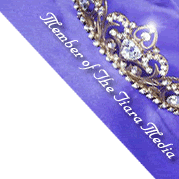 To read the tribute to SFC Marcus Muralles, please click here
To read the tribute to SFC Marcus Muralles, please click here 
Sunday, March 27, 2005
Biblical Archeology
When I was in high school, I was in the choir. We sang at every school Mass and several funerals as well as our regular concerts. One of the first songs you learned as a Choir member was one called "The Blessing of Aaron." It was song a capella in four part harmony, and the arrangement was so hauntingly beautiful that it would send shivers down your back every time you heard it.
Many of you have read the lyrics for "The Blessing of Aaron," but you might know it by a different name- The Priestly Benediction from the Book of Numbers.
OK. Enough preaching. What brought this on? An Israeli archeologist found some scrolls in a tomb in Jerusalem. On those scrolls were those words. The importance?
Many of you have read the lyrics for "The Blessing of Aaron," but you might know it by a different name- The Priestly Benediction from the Book of Numbers.
The LORD bless you and keep you:This has become my prayer. It sums up my hopes, my wishes, my prayers for those around me- that they would be blessed and kept in His care, that He would provide for their needs, and that He would be a true and real part of their lives and give them the peace only He can provide. And, yes, when the world becomes a bit too much, I cling to those words, knowing that, since Jesus is the fulfillment of all of the Old Testament's promises, I can rest easy, with His face shining upon me, in His Peace.
The LORD make his face to shine upon you, and be gracious to you:
The LORD lift up his countenance upon you, and give you peace. (Numbers 6:24-26)
OK. Enough preaching. What brought this on? An Israeli archeologist found some scrolls in a tomb in Jerusalem. On those scrolls were those words. The importance?
In 1979, Barkay found two small silver scrolls in an ancient Israelite tomb on a Jerusalem hillside. On them were written the words of the prayer.So often, cynics of religion, Christianity in particular, talk about how Scripture has changed over time. Once again, science has shown that it hasn't. That's just something amazingly awesome to read about on Easter morning.
"We have here the name of the Almighty as it appears in the Bible as it appeared to the Israelites," Barkay said.
Barkay dated the scrolls to the 7th century B.C., which would make them the oldest existing evidence of biblical verse. They were corroded and cracked; the writing was difficult to read, raising doubts about the age of the scrolls.
Now, a team of scientists and scholars from the United States has proven Barkay's theory was correct: that the scrolls are about 2,600 years old. That's 400 years older than the Dead Sea Scrolls. It took modern technology to prove their antiquity.


